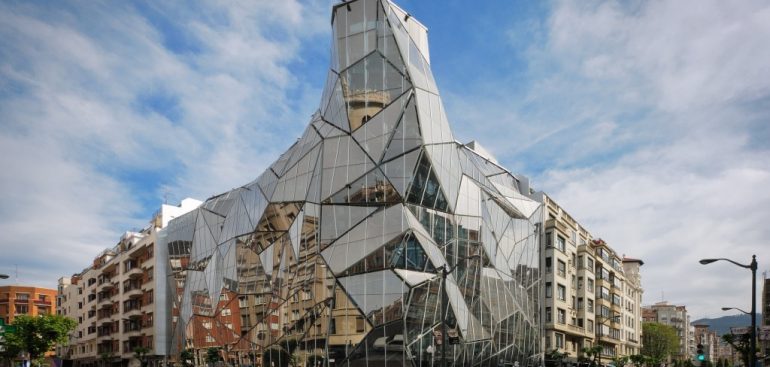The Leading Suppliers of Architectural Glass Pick Their Top 10 Buildings
#10 The Botanical Gardens of Curitiba, Brazil
Located in the biggest city in southern Brazil, the 240,000 m²park is a major landmark and tourist attraction.
The principal greenhouse has been designed in an art nouveau style using a modern metallic structure fused with curved glass panels, allowing light to enter the building from all angles.

#9 The Great Glass House (Carmarthenshire, Wales)
Designed by Norman Foster this single span glass structure lies with the Welsh countryside.
The dome is tilted by 7 degrees on its axis and faces a southerly direction to attract maximum sunlight. There are 147 computer controlled vents which allow for the air to circulate naturally. A real architectural glass marvel!

#8 The Louvre Pyramid, Paris, France
Probably one of the most recognizable and iconic buildings on our list, the Pyramide du Louvre is a large glass and metal structure designed by Chinese-American architect I.M Pei. It is constructed completely with 603 rhombus-shaped and 70 triangular glass segments and metal poles which reach a height of 21.6 m².
Its square base has sides of 34 metres and a base surface area of 1,000 m².

#7 The Shard, London
Designed by Renzo Piano and completed in 2012 The Shard is one of the youngest buildings on our list and the tallest skyscraper in London. The glass facades are angled to reflect the sunlight, so the appearance of the structure changes depending on weather and lighting conditions.

#6 Reichstag Dome, Berlin, Germany
The Reichstag dome is not only a magnificent glass structure, commanding 360 degree views of Berlin cityscape, it is also environmentally friendly. The building was designed with a mirrored cone which traps the sunlight and decreases its carbon emissions.
The large sun shield tracks the movement of the sun and electronically blocks direct sunlight. The design reflects how smart glass is becoming more commonly used in architecture.

#5 Kanagawa Institute of Technology Workshop
This building is a testament to how glass can be used to create space and light in a relatively standard shaped building. By using 305 columns which support the glass structure the viewer can see right through the building, from inside and out.

#4 The Dancing House, Prague, Czech Republic
Completed in 1996 and awarded the Design of the Year Award in 1996 from Time magazine this glass structure is one of the most famous buildings in Prague. The distinctive design uses glass to make the building look like it is clinging onto the concrete tower. It is regarded as one of the most interesting buildings in Europe.

#3 W Barcelona, Barcelona, Spain
Designed by Ricardo Bofill this stunning five star hotel in Barcelona dominates the skyline standing at 325ft tall. Located next to the port the architectural glass building allows for plenty of light to flood in and allows guest to enjoy the superb sea views.

#2 Basque Health Department Headquarters, Bilbao, Spain
This building is an architectural delight, using a double-skin glass façade provides the building with thermal and acoustic insulation, demonstrating how versatile and energy efficient glass can be. The glass sheets are situated on irregular angles, reflecting the surrounding buildings of the city.

#1 National Centre for the Performing Arts, Beijing, China
The Centre, a dome shaped construction of titanium and glass surrounded by an artificial lake, looks like it is an egg floating on water. The building contains an opera house and seats 5,452 people in three halls and is almost 12,000 m² in size. Designed by French architect Paul Andreu the titanium shell is broken by a glass curtain which gradually widens from top to bottom. Its spectacular design qualities and the clever use of water to accentuate the curved glass exterior make this building, in our eyes, an architectural masterpiece.
With so many advances in engineering, design and technology we are sure that many more innovative glass structures will be constructed across the world in years to come. One thing that won’t change however is how glass can completely transform the appearance of a building, offering clean lines, conjuring interest and successfully creating large bright spaces.






